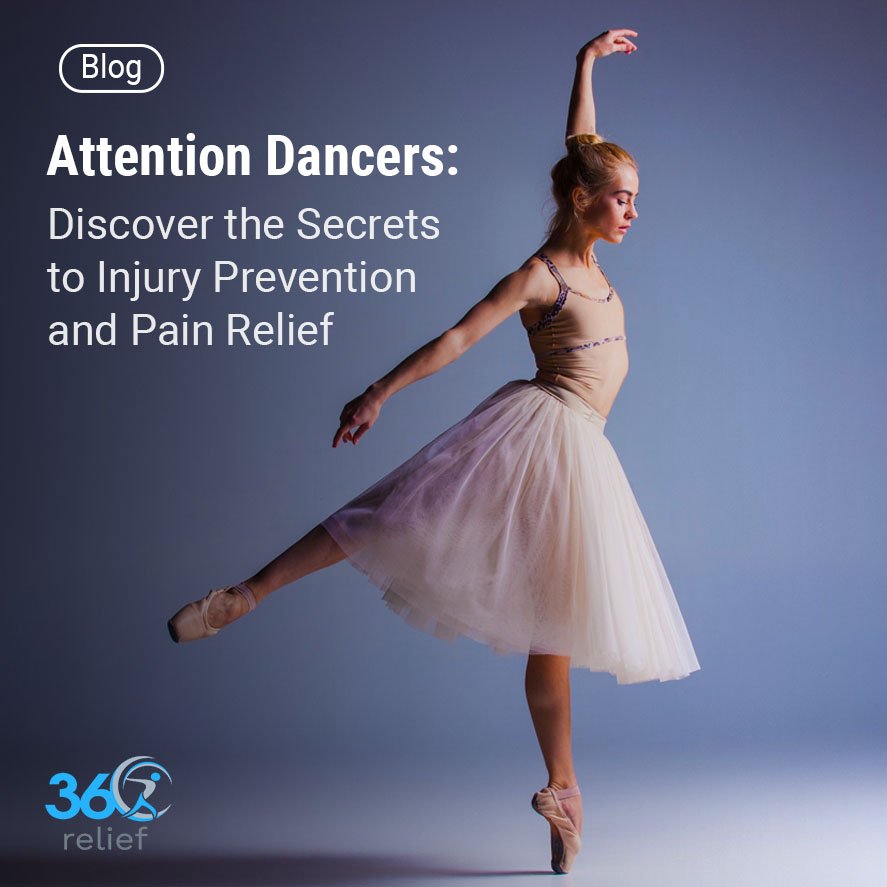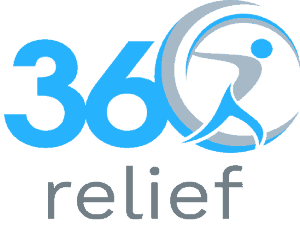
Make This Christmas Pain-Free: 10% Off on Supportive Wear!
Holidays are coming, which means that let’s welcome them with joy, laughter, and, of course, some comfort! At 360 Relief,

Dancing is indeed a challenging task which also includes the risk of physical damage. Physical damage can also affect your dancing performance and give rise to several painful physical conditions. For this reason, it is essential to have support products that can minimize the risk of damage without compromising your performance.
This article is particularly designed for dancers who want to save themselves from injuries or wish to manage previously existing injuries. Other than this, we will also discuss some of the quality-oriented products that can help you in relieving pain effectively.
Table of Contents
ToggleDue to physical workouts and repetitive movements, dancers are prone to multiple types of injuries. The injuries are mainly associated with their art forms. If you are a dancer and want to know what type of injuries a dancer can face, the understated point will help you in this matter:
The Sprains and Strains are the most prevalent injuries in dancers. They can have sprains and strains in the knee, back, ankle, and other body parts. The overstretching and twisting of these joints lead to this type of ligament and muscle damage.
In this condition, the ligament that supports the arch of the foot is inflamed. Dancers who spend lots of time in footwork mainly face this particular issue. It is quite a painful condition and sometimes it is so severe that a dancer feels difficulty in putting weight on foot.
The painful deformities of the big toe are termed bunions. This can occur as a result of pressure on the big toe due to continuous dancing. It is quite a discomforting condition and also affects the alignment of the big toe. One cannot wear tight shoes easily because of discomforting positions.
The shoulder injuries in dancers can occur due to repetitive movement and damage. This can also happen because of poor technique and overuse. Some of the prevalent shoulder injuries are rotator cuff injuries, labral tears, impingement syndromes, and bursitis.
There are multiple types of support products that can help dancers a lot. Some of these products are described here for you:
If you have weak ankles and feel consistent pain in your ankles, then the ankle support products can help you a lot. This can also aid you in removing discomfort and preventing ankle injuries. Above all, it is also very helpful in stabilizing the ankle. When it comes to ankle support for dancers, a neoprene ankle adjustable wrap, an ankle brace with cushion, and a neoprene brace to relieve discomfort are the best.
Padded knee supports are very assistive for dancers who practice for a longer time span. Moreover, you can also use neoprene knee supports if you feel pain in any part of the knee. The dancers with ligamental injuries mainly face difficulty in dancing practices. However, a hinged leg brace can give you support and relieve pain from the knee.
Back support is very painful and restricts the mobility of the dancers. That is why you need to use a premium grade back support that lets you perform activities of daily living without facing any restrictions. If you have an unaligned back, then consider using a posture corrector for back straight which can fix your alignment. If you have excruciating pain in the upper limb then the neck, shoulder, and clavicle support brace is the best choice for you.
The foot is one of the parts of the human body that barely gets any rest. Dancers have to use foot the most in their practice time which can be quite painful for them. In scenarios like this, the adjustable ankle support wrap lets you perform all the movements without causing any pain in the foot. Moreover, if you feel pain in your foot after dance practice then a pain relief ankle support wrap is a perfect fit for you.
Unlimited dancing movements in all directions can limit mobility and cause pain in the shoulder. It not only causes discomfort but also affects the activity of daily living. That is why the support products are recommended for better activity and functionality. The sprain frozen shoulder pain brace and posture corrector brace is a great options.
The repetitive stress on shin bone leads to painful conditions such as shin splints. In this condition, a person feels soreness, pain, and tenderness all along the shin bone which is quite discomforting. To cater to this issue, you can relay on compression socks for shin splint. Moreover, you can also use compression socks for Achilles tendon to manage this issue and improve overall circulation.
The effective support braces can help you in multiple scenarios. The support braces play a significant role in the life of a dancer. This helps in both injury prevention and recovery of pre-existing injuries. It also provides joint stability and corrects the alignment of body parts. You can also reduce the overuse injuries in the lower limb with braces such as a hinged neoprene brace for relieving discomfort or pain.
While doing risky dance movements, you can provide extra support to muscles and ligaments with braces. Not only this but it also aids in post-injury support and reduces the risks of re-injury. If you have pain in any area, then it can also be used to provide compression that can reduce pain. Assistance in functional recovery of a limb is also a specialty of a brace.
As discussed in the following article, if you are a dancer, it is important for you to take care of yourself and minimize physical damage. Dancers are highly prone to physical damage which is quite a tiring situation and also limits functional activities. There are multiple types of injuries that a dancer can face. This includes plantar fasciitis or bursitis. To manage these issues, you can rely on several precautionary measures which also include the usage of braces and other support devices.

Holidays are coming, which means that let’s welcome them with joy, laughter, and, of course, some comfort! At 360 Relief,

Happy Cyber Monday to everyone; it is a perfect occasion for 360 Relief to offer a special discount of 10%

This Black Friday, take advantage of exclusive 10% savings on some of 360 Relief’s best-selling compression socks and support braces!

Everyday life includes walking up stairs, but knee discomfort can make this basic activity difficult. Walking up or down stairs

Cooking is a beloved activity for many, but for those struggling with knee pain, standing in the kitchen can quickly

We’ve all been there. On a ride in a car, for instance, to the country home for a weekend break

Gardening is enjoyable for many people and those who like tending to their lawns and plants usually find it therapeutic

Do you have a painful knee problem that takes you to physiotherapy…for an injury that hampers your daily living…your workout

Training can be very much associated with some pains and injuries that may be experienced by the trainers. As there

Office workers often spend hours seated at their desks, focusing on tasks while unknowingly putting their health at risk. The

Winter often brings more than just a change in weather; for many, it also means dealing with unexpected swelling in

Compression socks have become a critical tool for athletes across all sports. Whether you’re a marathon runner, cyclist, or weightlifter,

October marks the beginning of National Cholesterol Month in the UK, a time dedicated to raising awareness about cholesterol and

Overall, there is nothing to match the experience of watching musicians perform live in an outdoor concert in Glastonbury. However,

Today charity runs have gained popularity as a way of raising cash for a cause in the United Kingdom. From
Please enter your email to subscribe to our newsletter for exclusive offers and updates
Copyright © 2025 | 360 Relief Ltd | Sitemap

